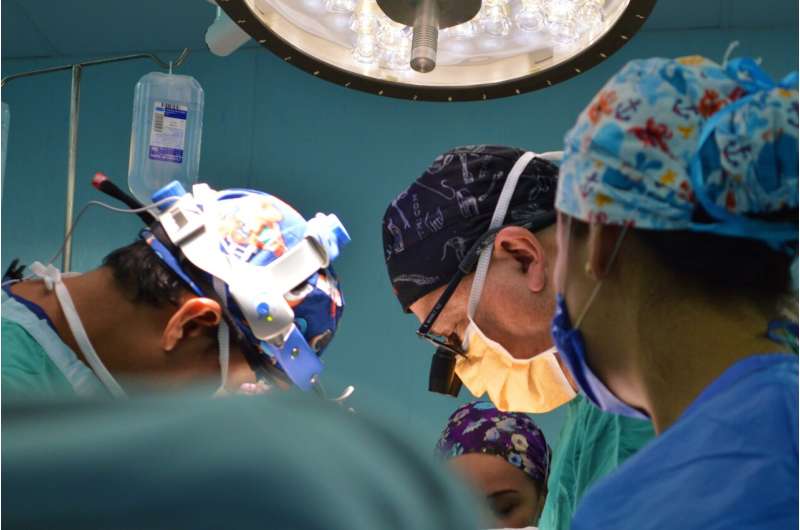This article has been reviewed according to Science X's editorial process and policies. Editors have highlighted the following attributes while ensuring the content's credibility:
fact-checked
peer-reviewed publication
trusted source
proofread
Examining differences in mortality rates for dangerous cerebral hemorrhage among Finnish university hospitals

Subarachnoid hemorrhage (SAH) is one of the most dangerous cerebrovascular disorders, with as many as 40% of patients dying within one month of the event.
A study recently published in the journal Neurology investigated whether there are differences in the prognosis of SAH patients between the university hospital districts in Finland. The research dataset was composed of nearly 10,000 SAH cases from 1998 to 2017, including information on patients who died before receiving neurosurgical care.
Prognoses improved the most in Helsinki and Tampere
In Finland, the treatment of SAH patients has been centralized in five university hospitals (Helsinki University Hospital HUS, Tampere University Hospital, Turku University Hospital, Oulu University Hospital and Kuopio University Hospital). According to the study, Finland's lowest SAH mortality figures were found in patients treated in Helsinki and Oulu, while the highest mortality rate was observed at Turku University Hospital. During the study-period, prognoses improved the most in Helsinki and Tampere.
The difference between the highest and lowest mortality rates in the university hospital districts was 52%. Variation was similar for women and men in all age groups.
"The regional differences came as a surprise, as Finland has a relatively homogenous population with equal access to public hospital care. Because of these regional differences, region-specific mortality rates should not generalized as nationwide figures of Finland in international comparisons, as has usually occurred," says Aleksanteri Asikainen, the lead author of the study from the University of Helsinki.
In an international comparison, the hospital mortality rate of all SAH patients in Finland was 20%, while the corresponding figure for the Helsinki University Hospital region was under 17% at the end of the study-period. In Norway, the United Kingdom and Australia, these figures have been roughly 25% in nationwide studies.
"Our findings indicate the unit in the former Töölö Hospital headed by neurosurgeons and neuroanaesthesiologists ultimately achieved the lowest SAH mortality rate in Finland, and one of the lowest globally. Now that the treatment of SAH patients has been transferred to the new Meilahti Bridge Hospital, we must carefully monitor mortality figures," says Miikka Korja, a neurosurgeon specializing in the treatment of SAH patients at Helsinki University Hospital HUS.
Further research needed to determine causes underlying variance in mortality
According to the researchers, their data cannot be used to explain differences in mortality between hospitals. Consequently, the research findings should not be used as indicators of the quality of care at the university hospitals.
"The mortality figures understandably appear to be the lowest in hospitals that provide care to the highest number of patients as well as to patients with the lowest average age. To determine more specific reasons, we need research that encompasses more extensive information on individual risk factors as well as differences between hospitals in the diagnostics and treatment of SAH patients," says Ilari Rautalin, the principal author from Auckland University of Technology.
More information: Aleksanteri Asikainen et al, Case Fatality of Aneurysmal Subarachnoid Hemorrhage Varies by Geographic Region Within Finland: A Nationwide Register-Based Study, Neurology (2023). DOI: 10.1212/WNL.0000000000207850


















